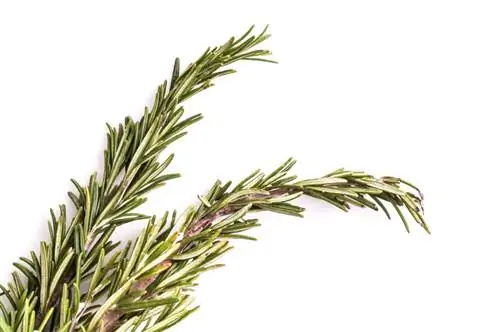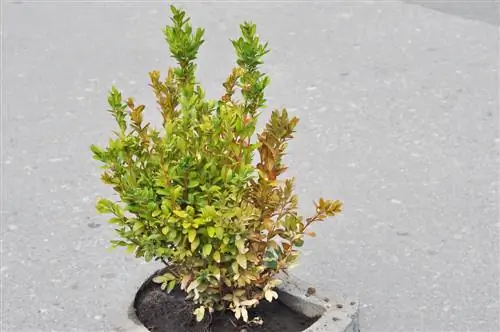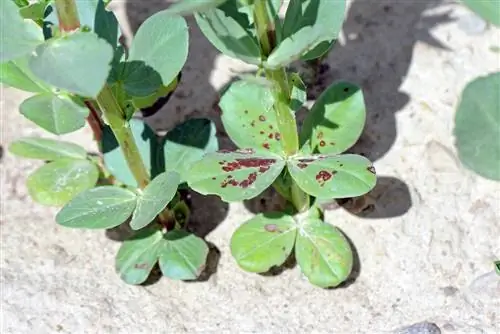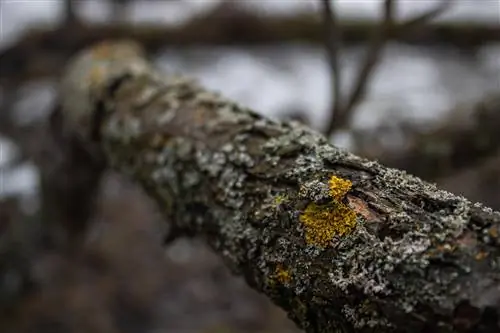- Author admin [email protected].
- Public 2023-12-16 16:46.
- Last modified 2025-01-23 11:20.
Aromatic herbs from the mint family, which also includes rosemary, not only taste good to us humans, but also to many pests. If the rosemary leaves suddenly have small, yellow or white spots, the plant is most likely infected by so-called leafhoppers.
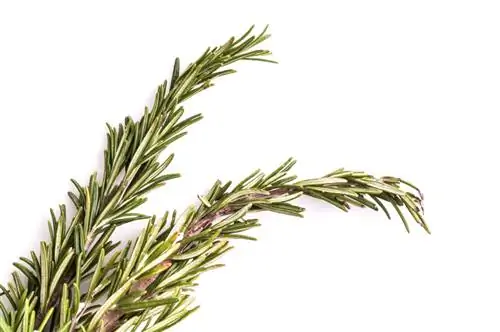
What causes yellow spots on rosemary leaves?
Yellow spots on rosemary leaves are often caused by leafhoppers sucking out the leaf juice. To combat the infestation, repot and rinse the plant, and use a diluted vinegar solution to spray.
Dygmy cicadas are often behind it
Actually, cicadas are better known from southern countries. What is less known, however, is that in this family of insects, which includes around 45,000 different species, there are tiny specimens that are a maximum of two millimeters long. There are also different species of these dwarf leafhoppers, with rosemary being particularly affected by the black-spotted leafhopper (Eupteryx atropunctata), the sulfur leafhopper (Emelyanoviana mollicula) and the Ligurian leafhopper (Eupteryx decemnotata). The name “leafhopper” comes from the diet of these pests; they primarily sit on the underside of the leaves and suck the nutritious leaf juice. In good light, the small, elongated and winged animals can also be seen. The yellow or yellow-white dots or spots on the leaves are the puncture sites.
Measures against cicada infestation
Fortunately, such a cicada infestation of the plant usually cannot be dangerous, so it is primarily a visual problem. However, you should take appropriate measures as quickly as possible, as sucking out the leaf juice weakens the plant in the long term. The animals are also very mobile and can spread quickly. If you want to use your rosemary in the kitchen, it is better to stay away from chemical pesticides. Instead, you can fight the animals biologically:
- As a first step, the infected rosemary should be transplanted.
- Carefully remove the old substrate and shake the plant thoroughly.
- Now rinse the rosemary vigorously in the shower.
- Place the plant in a new pot and fresh substrate.
- Also move it to a new location.
- Spray the plants with a diluted vinegar solution to kill any remaining eggs.
Tips & Tricks
Leafhoppers lay their eggs in autumn, and the larvae hatch in early spring. You can protect young plants with a close-meshed insect protection net, but you should still check them regularly for insect infestation. The sooner you react, the more likely you are to get rid of the little animals.

